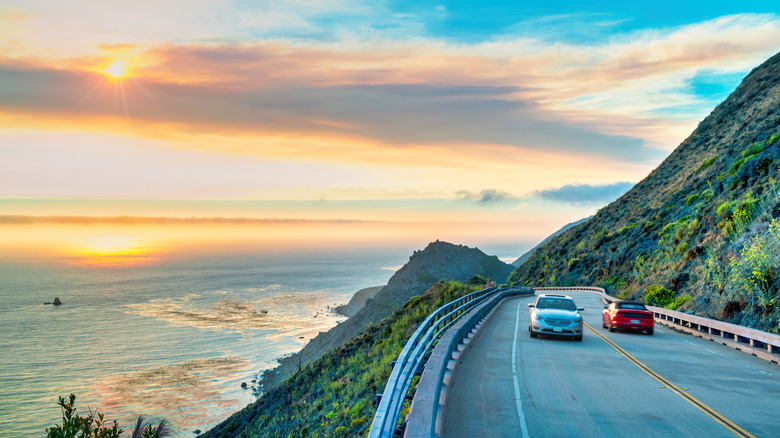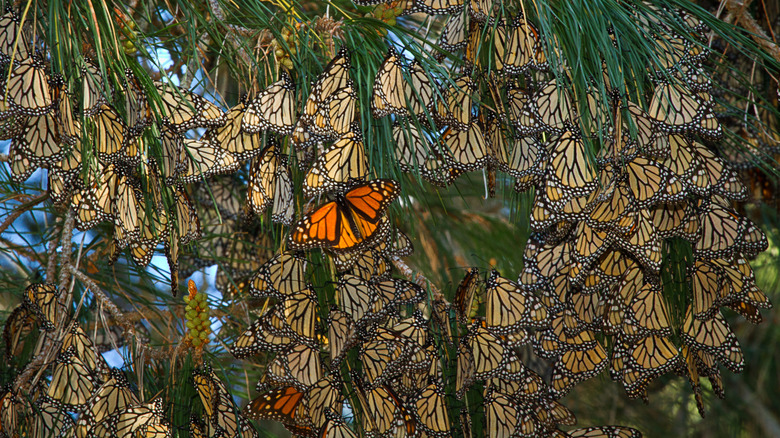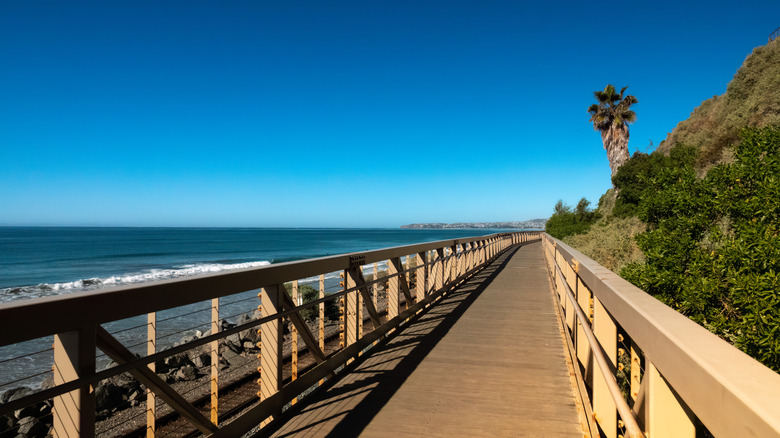
If spotting a monarch butterfly feels like a rare occasion these days, it's not just your imagination. Across North America, the monarch population is dwindling — the numbers have dropped an astonishing 99% since the 1980s, according to the U.S. Fish & Wildlife Service. The decline is particularly worrisome in the Western United States (California, Oregon, Washington, Idaho, Utah, Nevada, and Arizona), where climate change, pesticide use, wildfires, and man-made developments have altered or destroyed
overwintering sites or temporary habitats for migrating butterflies.
An ambitious conservation project aims to combat the problem while inviting visitors to see monarchs in the wild. The 465-mile Western Monarch Trail links 14 protected sites, ensuring safe migration paths, food, and shelter for butterflies that spend their summers inland and their winters on the coast. The trail makes for a road trip-worthy adventure, and if you time it right, you'll witness the rare and beautiful phenomenon of butterflies clustering together to stay warm and conserve energy. If you love monarchs, don't miss a visit to the secret California city nicknamed "Butterfly Town USA" — Pacific Grove.
Read more: The 5 Best Hidden Hot Spring Hikes In California
A Road Trip Through Monarch Habitats

The northernmost site on the Western Monarch Trail is Andrew Molera State Park in Big Sur. Hike on the coastal bluffs and visit the monarch butterfly grove set around eucalyptus trees before enjoying a picnic on the beach. Camping is available by reservation, and a great lodging option nearby is Big Sur Lodge (around $429 per night in high season). From there, it's a 3- to 4-hour drive to the next sites at William Randolph Hearst Memorial Beach and Cambria, an underrated, artsy city on the California coast.
Continuing south, you'll arrive at the Monarch Preserve in Los Osos (45 minutes by car), the gateway to several other stops on the Western Monarch Trail. There are two overwintering sites in Avila Beach, one at a mission in downtown San Luis Obispo, and another at the popular (and free to visit) Pismo State Beach Monarch Butterfly Grove.
It's a good place to break for the night: Pismo Beach, one of California's best hidden beaches, has a family-owned seafood restaurant that's an excellent choice for dinner. Inn at the Pier Pismo Beach, Curio Collection by Hilton ($295 per night in peak season) is just steps from the pier and its whale watching platform.
Plan An Adventure On The Western Monarch Trail

On the last leg of the road trip along the Western Monarch Trail, you'll pass through Carpinteria Creek (1.5 hours from Pismo Beach) and the Hueneme Masonic Cemetery (40 minutes further) before hitting Los Angeles. The southernmost stop is on the other side of the city, midway to San Diego in San Clemente, California's "Spanish Village By The Sea," which offers beach camping. After visiting the monarchs' winter habitat on San Clemente State Beach and hiking on coastal trails, pitch a tent on the sand or book a room at a boutique hotel in town.
For optimal butterfly viewing, plan your road trip for November through January, though you're likely to have a good experience anytime between mid-October and mid-February. Sunny afternoons are generally the best time to see monarchs in action. Depending on which sites you plan to visit, and in which order, you could book flights into Los Angeles International Airport or a smaller regional airport. Either way, you'll want to rent a car to explore the trail at your own pace.
Ready to discover more hidden gems and expert travel tips? Subscribe to our free newsletter for access to the world's best-kept travel secrets.
Read the original article on Islands.














